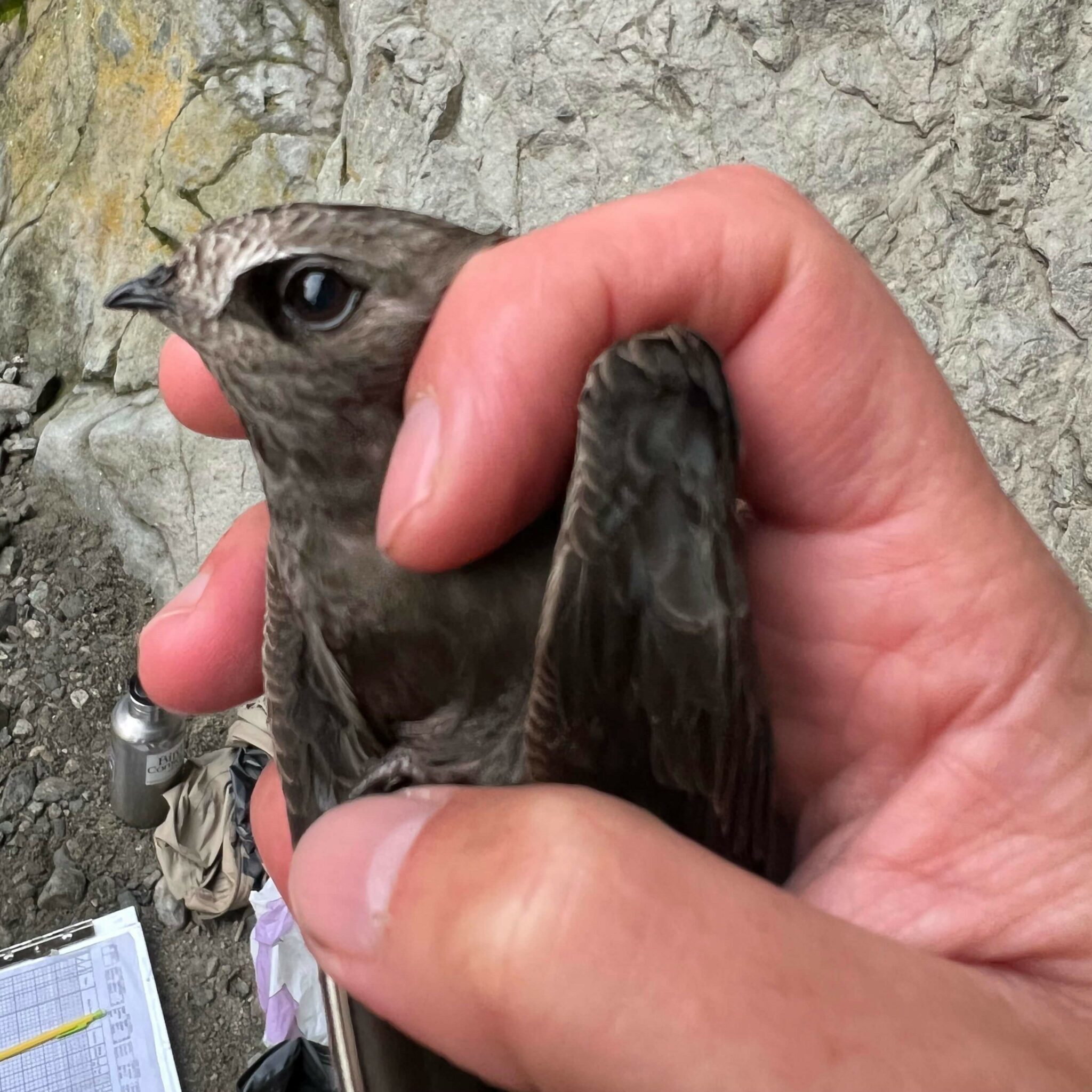As I stumble out of my tent at 4 a.m. my eyes squint to a blanket of stars in the dark sky above me. My red headlamp light illuminates my tent as I gather my gear, and get ready for my ascent to Columbine falls in Rocky Mountain National Park, a mere 2.6 miles and 1,475 ft gain in elevation to the falls along the Longs Peak trail. This trail is popular among hikers that attempt to summit Longs Peak.
The Bird Conservancy of the Rockies’ social media posting on August 31 grabbed my attention. Featuring a close up of a Black Swift in hand, the accompanying post announced that the Black Swift Research Team had recently caught three Black Swifts, all of which had been banded 17 years ago in 2005 as adults, breaking the longevity record of oldest known for the species. My heart nearly stopped.

The Black Swift is an aerial insectivore that has evolved an almost exclusive lifestyle on the wing. This species is of continental concern, but little is known about its movement ecology. We recently discovered a new behavior, an amazing adaptation to moon light and gained insight into their foraging patterns during the breeding season.
Tune into this webinar to learn what the Black Swift research team has learned from the Black Swift Movement Ecology project. This webinar is presented by Rob Sparks the Black Swift Research team lead at Bird Conservancy of the Rockies.
The program fee is $3 to attend this webinar.
In order to provide equitable access to all, complimentary tickets are available at no cost to the participant thanks to support from generous donors.
Follow this LINK to register!
After registering you will receive a confirmation email containing the ZOOM link to be used the day of the webinar.
Black Swifts are thought to forage long distances from their nest sites, but their basic movement ecology is unknown. Knowledge about daily foraging routes and distances will help identify flight patterns, foraging hotspots and habitat relationships—critical to understanding the conservation needs of this enigmatic species.
Summer Camps are a venue to develop an affinity for uncertainty—a central part of the scientific process. On the Wing, a ten-day camp for teens interested in field biology and ornithology, turns uncertainty into something to be explored. Along their journey, participants gain new skills, confidence and lasting memories of life-changing experiences.
Unlocking the mysteries of birds and their full life cycle is vital to understanding their conservation needs. In today’s post, Development Director Sonja Macys shares her passion for birds and invites you to get involved as a supporter of our important work.
Black Swifts are at risk to the effects of climate change. As our atmosphere heats up and viable Black Swift breeding habitat dwindles, proactive conservation of this species is critical. A team of researchers is working to conserve the North American population of Black Swifts, conducting research across the West to better understand the “coolest bird.”
Earlier this month, the sustainable tourism website Rumbos published a photo of an alleged Black Swift taken Dec. 2, 2012, during a birding rally in Tambopata, Peru. If it is indeed a Black Swift, this would be the first known sighting of the species in South America, outside of samples of a Black Swift subspecies collected in Colombia in 1993.
Six years ago in late August, Rich Levad, Rob Sparks, Jason Beason and Ken Behrens hiked through spruce fir forest to a spot just above timberline where a Black Swift nest clung to a wet, rocky outcrop. The outing was part of Rocky Mountain Bird Observatory’s effort to collect baseline data on this little-known species. When no swifts were seen that evening, the scientists wondered if they had already started migrating – and where did they go?
The last bird that breeds in the U.S. and Canada with an unknown winter destination has finally given up its secret. After years of research – and with some luck – three Colorado researchers have learned that Black Swifts travel more than 4,000 miles to spend the winter in Brazil.


